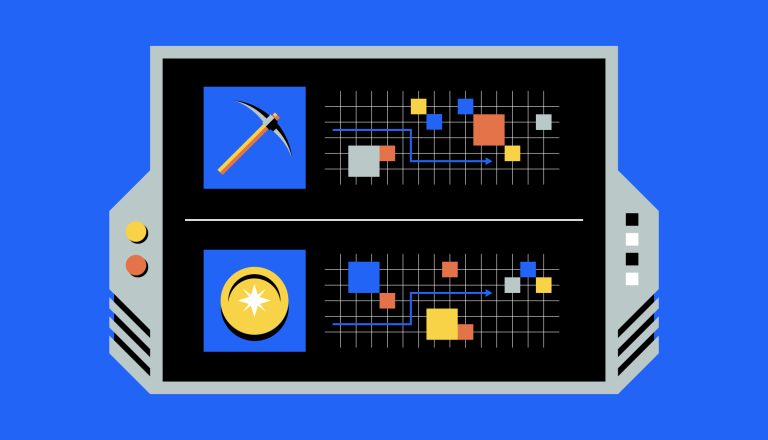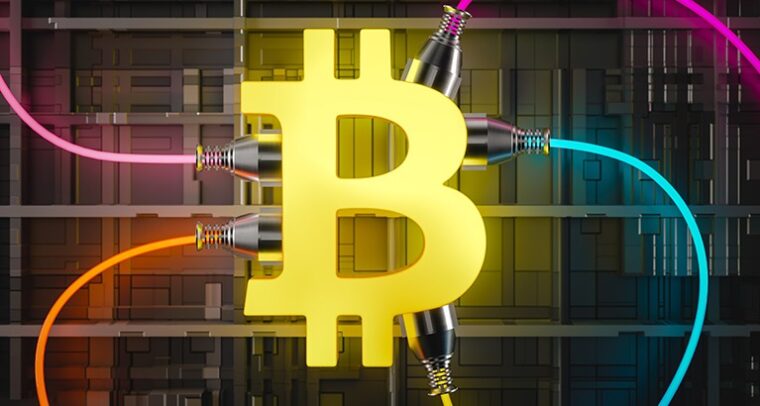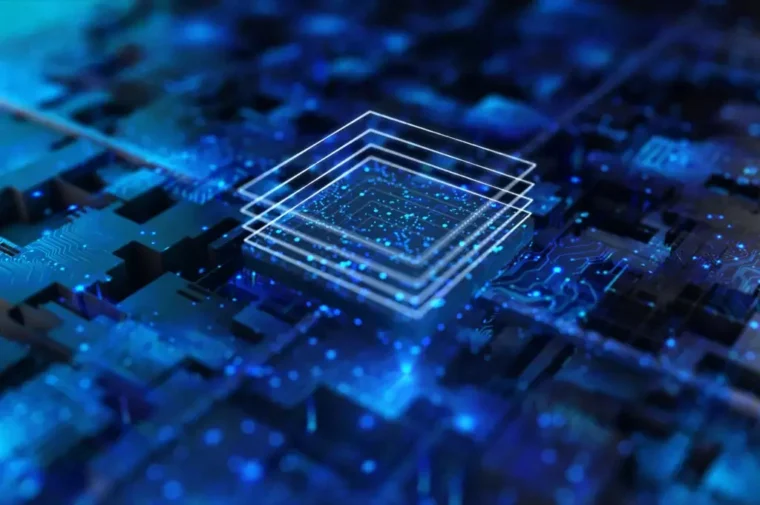Bitcoin, introduced in 2008 by the mysterious Satoshi Nakamoto, is a decentralized cryptocurrency that operates without a central authority. At the heart of Bitcoin’s design is a process known as “mining”. This process is pivotal in maintaining, validating, and ensuring the integrity of the decentralized ledger, commonly referred to as the blockchain.
The Puzzle of Proof-of-Work (PoW)

Proof-of-Work (PoW) is the backbone of Bitcoin mining. It involves solving complex cryptographic puzzles to validate and record transactions on the blockchain. Central to this is the SHA-256 hashing algorithm—a function that converts transactional data into a fixed-size string of characters. Miners compete to find a ‘nonce’, a random value, which, when hashed, matches a target set by the network. The first to succeed broadcasts their solution, and upon verification, the block is added to the chain.
The Miner’s Toolbox: Hardware and Software Essentials
Over the years, Bitcoin mining has evolved drastically. Initial miners used standard CPUs. However, as the puzzles grew more complex, there was a shift to more powerful GPUs. Today, specialized hardware known as ASICs (Application-Specific Integrated Circuits) dominate the mining landscape due to their efficiency and speed.
Software-wise, there are numerous mining applications available tailored for different hardware setups. These tools often come with interfaces that allow miners to monitor performance metrics. Many miners also opt to join mining pools—groups where individual miners combine their computational power to improve chances of solving the PoW puzzle and share the rewards.
Energy Consumption: The Great Debate

One of the most significant criticisms of Bitcoin mining is its energy consumption. Some estimates have equated its energy use to that of mid-sized countries. This has raised environmental concerns due to the associated carbon footprint. However, proponents argue that mining increasingly uses renewable energy. Furthermore, when compared to traditional banking systems or gold mining, Bitcoin’s energy consumption seems less alarming.
Mining Rewards and Incentives
For every block mined, miners receive a set number of bitcoins as a reward. Initially set at 50 bitcoins, this reward halves approximately every four years, an event known as “halving”. As of now, the reward stands at 6.25 bitcoins. Miners also earn from transaction fees users pay when making Bitcoin transactions. However, as the block reward continues to halve, there are concerns about the future profitability of mining, especially when the reward eventually dwindles to zero. Whether you’re a beginner or an experienced trader, a great option for buying and selling crypto is profitedge.org
Alternatives to Proof-of-Work

Due to the environmental concerns surrounding PoW, there’s a growing interest in alternative consensus mechanisms. Proof-of-Stake (PoS) is a prominent alternative where validators are chosen based on the number of coins they hold and are willing to “stake” as collateral. PoS is considered more energy-efficient. Some networks use hybrid systems, combining the best of both PoW and PoS. Additionally, there are other mechanisms, like Delegated Proof-of-Stake and Proof-of-Space, which are being explored to create a more sustainable decentralized future.
Security and Mining: The Constant Battle Against Attacks
The decentralized nature of Bitcoin also makes it a target for attacks. The infamous 51% attack occurs when a miner or mining pool controls more than half of the network’s computational power, allowing them to double-spend or prevent transactions from getting confirmed. Though such attacks are challenging and costly to execute, they underline the importance of decentralized mining power. On an individual level, miners also employ measures to protect their rewards and assets from cyber threats.
The Future of Bitcoin Mining

The rapid technological advancements, like quantum computing, hold potential implications for Bitcoin mining. While some view quantum computers as a threat due to their potential to break cryptographic puzzles easily, others see them as a boon for creating even more secure systems. Additionally, the global regulatory environment will undeniably shape mining’s future. With nations like China taking strict stances against cryptocurrency operations, miners globally are on the lookout for more welcoming jurisdictions.
Conclusion: The Ever-evolving Landscape of Bitcoin Mining
Bitcoin mining stands as a remarkable demonstration of the harmonious fusion between technology and economics. Beyond merely upholding the operational integrity of the Bitcoin network, it serves as a powerful embodiment of the decentralized principles that underlie the cryptocurrency’s foundation. As we delve deeper into the era of digital currencies, the practice of mining will unquestionably undergo further transformation, adapting to the evolving demands of this groundbreaking financial landscape.
